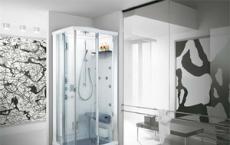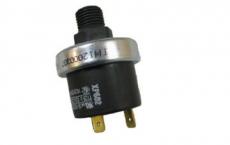The best option for heating a private house. Inverters or simple fan heaters? What is a heater
The health and well-being of the child is a kind of guarantee for the peace and well-being of the whole family. To ensure that the children have a good microclimate and prevent inconvenience or injury, you need to know which heater is best for an apartment with a small child. Today on the market you can buy a variety of classes of devices. They have their advantages and disadvantages, so we will consider the rating of utility from below, as the attractiveness and safety increase.
Fan heaters belong to the most widespread, inexpensive and numerous segment of the market. Their merits are weighty:
- you can choose a device that will work extremely stably, equipped with a cylindrical turbine;
- cost of solutions is small;
- the security level is high.
However, in the children's heat fan requires constant supervision. It is necessary:
- watch out that the child does not put foreign objects into the gratings;
- falling to one side may lead to malfunctions;
- closing the air intakes causes overheating;
- the ingress of water is fraught with a short circuit, the appearance of an open fire, electric trauma.
Therefore, for children's room fan heaters are not applicable. An exception can only be made for industrial variants, floor heating systems that are protected from moisture, have perfect control systems, and their weight and size indicators are such that it is simply difficult for a child to overturn them.
The noticeable shortcomings of fan heaters include somewhat high noise, as well as the odor that occurs when dust particles enter and burn from the air to a heated spiral. In addition, heaters of this class burn oxygen in the room. This applies to a lesser extent to modern fan heaters with a cyclone turbine and a low-temperature system, but this disadvantage is weight if the device is installed in the nursery.

Oil heater - a very acceptable option for permanent heating around the clock for children. Expensive models consume a lot of electricity in maximum mode, however:
- in the operating mode with a relatively stable oil temperature, the inclusion of the device is quite rare;
- always switch to economy mode, it's easy to choose your own option for comfortable temperature in the room;
- the automation is reliable, the heater is economical, does not require intervention;
- the model of a large mass is difficult to accidentally overturn;
- protection systems are reliable, even covering the device does not cause accidents.
But there are undoubted disadvantages of this class of devices. To negligible is the long warm-up and large power consumption before going into the operating mode. But the most important - the heated elements are open and accessible, the child can get burned, especially if it touches the zone of the TEN's location.
The oil heater will dry the air a little. However, this model lacks humidifiers. In the simplest version in the upper part of the heater is a container with water. In complex models, the humidification system is equipped with a low-power fan. In the liquid, you can add aromatic oils, including those useful for health, respiratory organs.
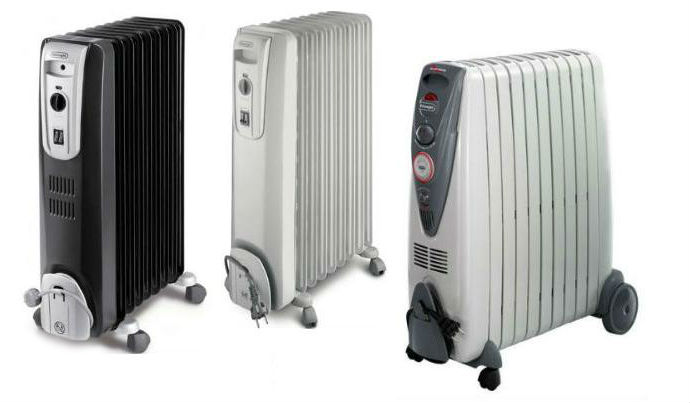
Convectors
Convector systems are the most complex and proven solution. It's hard to call it the best because of the high price and the presence of some shortcomings. But the option of using not electric power, but gas fuel, can make the convector the most attractive for equipping children's and other rooms in a private house.
Systems operating on gas are miniature self-sufficient heating boilers. Fuel to such convectors comes on thin copper tubes, laid in skirting boards. And the exhaust and air intake is from the outside: a hole is drilled in the wall at the installation site for the outlet of the branch pipe.
There are two engineering versions of the convector design:
- the panel can be opened and form a uniformly heated surface without extremely hot areas, which are distinguished by oil heaters. This is how convectors of the glass panes look. They also work as infrared heaters;
- the heating unit can be surrounded by a protective housing, with the heat released through the air. The work is similar to the mechanics of functioning of the radiator.
The last version of the convector is the most safe for the child. No chance of injury or access to the electrical parts of the device. However, the convector dehumidifies and can exhale unpleasant smells due to dust accumulating in the heating zone.
Film heaters
Systems on film carbon elements are an excellent heater for a children's room. Their advantages are extremely compact dimensions, low price, availability of different versions. Today you can buy or order for individual production:
- comfortable mats of any size;
- wall panels;
- litter under the carpet, laminate.
With the onset of cold weather, the question of additional heating of the room becomes acute. Therefore, if your home or office is not warm enough, it's time to buy a heater. Modern heaters are effective and practical devices for creating a comfortable temperature in the room not only in the off-season, but also in the winter. The market of climate technology is represented by a wide range of different household heaters. How to choose a heater from all the diversity our project will tell.
Which type of heater is better?
Oil radiator
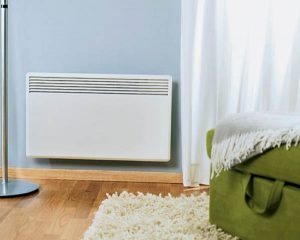
Who has not heard of oil coolers? The most common type of household heaters, which is most often used in apartments and offices. In the metal radiator there is a coolant, usually distilled water, or oil. The heating medium is heated by a spiral heating element inside the housing. When the appliance is connected to the mains, the spiral heats the oil, as a result of which the heat spreads into the room through the metal casing. To create a comfortable microclimate, it is important to take into account the power of the device and the volume of the heated room.
The power of the electric oil cooler can be 1 - 2.5 kW. The main difference is in the number of sections. At oil radiators can be 5-15 sections. Consequently, the larger their number, the higher the power of the device, and hence the greater the heat transfer.
Oil radiators are used for additional heating of apartments, private houses, cottages, office and commercial premises, etc.
Benefits
Oil radiators undoubtedly have many advantages:
- A low temperature of heating the casing (does not exceed 60 ° C), this means that they are absolutely safe for children and animals;
- Maintenance of the set temperature mode due to the presence of a thermostat and a 24-hour timer. After warming the room to a certain temperature, the heater switches off automatically. When the temperature drops by 1 ° C, the appliance automatically switches on for additional air heating.
- No burning of oxygen;
- Mobility. Due to the presence of special wheels, the device can be moved or moved to another room.
disadvantages
There are no significant negative sides, such a radiator does not have, but as specialists drawbacks:
- An impressive weight (some models can weigh up to 16 kg);
- Large dimensions, which cause inconvenience not only during operation, but also during storage of the device;
- Slow heating (due to long heating of the coolant). The average heating time of the radiator reaches 15-20 minutes.
Convector heaters (convectors)

Every year electric convectors become more and more popular among ordinary consumers, as the most economical, convenient and efficient type of heater. For rapid heating of the room, we advise select a heater convection type. The principle of its operation is even simpler than that of oil coolers. Heating of the air is due to the heating element (closed or open type), which is located at the bottom of the convector. A special feature of the convector is the natural convection of the air, which results in an efficient heating of the room. Heated air rises, and cooled down - falls down and the heating process repeats.
As already mentioned above, convector heaters can be equipped with closed and open heating elements. Closed heaters are a filament filed in a special ceramic flask. This heater does not dry the air and does not burn the dust that hit its surface. In addition, it is more durable and reliable. As an open heater, a metal spiral is used. It is less reliable, capable of quickly failing, drying the air, reducing the humidity in the room. Therefore, when using such a heater, we advise you to additionally purchase it to maintain a comfortable level of humidity in the room.
The convector output is 0.5 - 2.5 kW. By type of installation, convectors can be wall-mounted and floor-standing. And now more in detail about the advantages and disadvantages of such heaters.
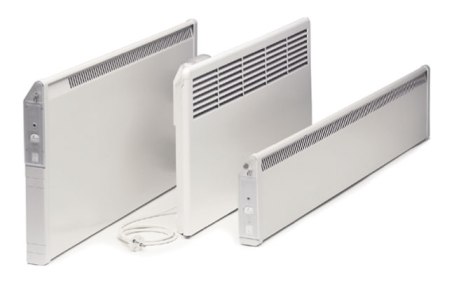
Benefits
- Noiselessness and fire safety;
- Mobility;
- Rapid heating (convector is enough for 5-7 minutes to heat the air to the set temperature);
- Built-in heater overheat protection;
- Safety and absence of burns (the casing temperature does not exceed 50 ° C);
- Presence of thermostat and timer;
- Ability to create electrical system heating, consisting of several convectors;
- Light weight;
- Attractive appearance
The only disadvantages are the burning of oxygen in models of convectors with an open heater.
Heat guns
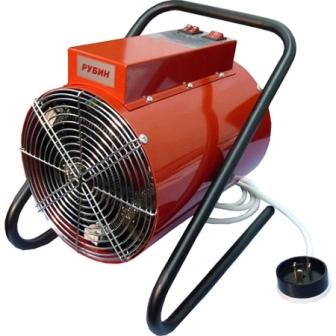
These are quite unique heaters. Heating of air is carried out by means of a spiral heater. A built-in fan is used to improve the convection of heated air. The main place of application of thermal guns is trade and industrial premises, garages, warehouses and construction sites. In rare cases, heat guns are used to heat rooms in residential and office buildings.
The power of such a device can be from 2 to 6 kW.
Heaters of this type can be stationary (floor and wall), as well as mobile devices. When choosing a heater pay attention to its advantages and disadvantages.
Benefits
- Fast heating;
- Mobility;
- Automatic trip when overturning;
- Protective relay against overheating of the heating element;
disadvantages
- Noisiness;
- Impressive weight and dimensions;
Thermal fans

Fan heaters are analogues of heat guns, but they are used mainly for heating premises in residential and administrative buildings. The principle of the devices is to heat the cold air and move it around the room with the built-in fan. Rapid heating is replaced by the same rapid cooling of air. Therefore, in order to maintain a comfortable temperature in the room, it is necessary to keep the fan heater permanently on. Important: Do not leave the appliance unattended to prevent a fire hazard.
The power of the device is 2 - 2.5 kW. Fan heaters can be both wall-mounted and outdoor portable. Which heater to choose, you decide.
Like other types of heaters, thermal fans have both advantages and disadvantages.
Benefits
- Fast heating;
- Low cost;
- Overheat protection;
- Light weight and small dimensions
disadvantages
- Noisy work;
- The possibility of burning dust, as a consequence - the appearance of an unpleasant smell.
IR heaters

When choosing a heater infrared radiation special attention should be given to the type of heating element and the reliability of the structure. As a rule, in such devices, quartz and halogen lamps, as well as carbon filaments, are installed as heating elements. Infrared heaters are the simplest and economical heaters. Their distinctive feature is local directional heating. They do not heat the air, like all the above devices, but objects located near (furniture, walls, floor). This contributes to the rapid heating of air in the room.
Infrared heaters can be in the floor, wall, ceiling and mobile versions. Such heaters are used not only for heating of enclosed premises, but also for open areas - terraces, balconies, loggias.
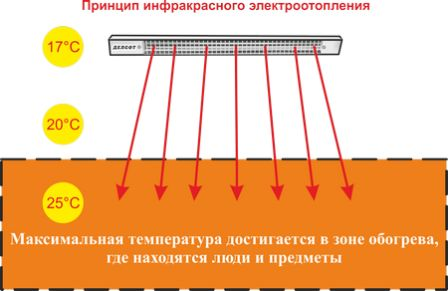
Benefits
- Fast heating;
- Noiselessness;
- Low energy consumption;
- The possibility of using both in rooms with a high level of humidity (showers, bathrooms, pools), and in the open air
disadvantages
- Inability to heat large volumes;
- High price
Heat curtains
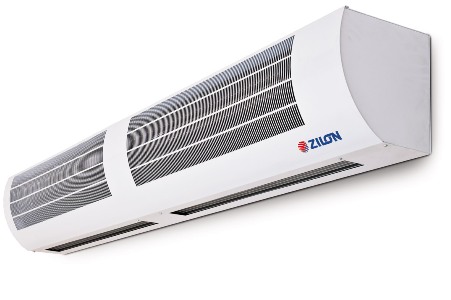 More complex type of heaters, according to the principle of action is similar to. Heat curtains are installed exclusively in window and door openings. Their main goal is not so much to warm, as to create an obstacle to getting cold air into the room. That is why the thermal curtains are used in shopping centers, office and storage areas. For living quarters, they are not entirely appropriate.
More complex type of heaters, according to the principle of action is similar to. Heat curtains are installed exclusively in window and door openings. Their main goal is not so much to warm, as to create an obstacle to getting cold air into the room. That is why the thermal curtains are used in shopping centers, office and storage areas. For living quarters, they are not entirely appropriate.
The power of the thermal curtains is from 3 to 12 kW. In order to properly choose the appropriate curtain model, you need to know two parameters - the width and height of the openings (window or door). The width of the opening must correspond to the width of the curtain.
The heat curtains are mounted in a horizontal and vertical position.
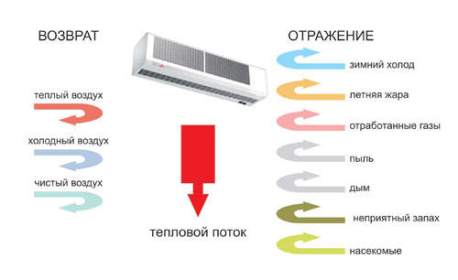
In addition to all the above heaters, for in-house heating, inverter-type air conditioners, electric fireplaces, heaters with quartz, carbon, halogen and micothermic heaters are used. Today we will not consider these devices, since they are similar in principle to the most common heaters.
Calculation of the power of the heater
In order to select a heater correctly, it is necessary to calculate the power of the device, which will be enough to effectively heat the room you need.
It is generally accepted that for heating a room of 10 sq.m. A device with a power of 1 kW is sufficient. For more information on calculating the required power, you can find out using the data in the table.
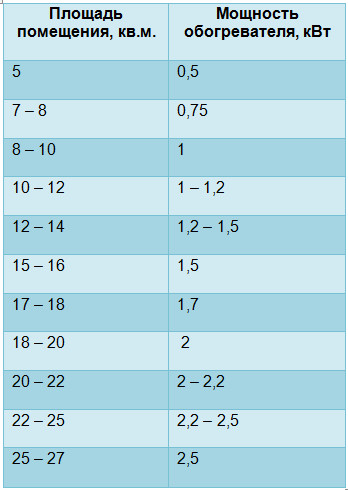
For example:
For basic heating of a room of 20 sq.m. it is necessary to choose heaters of power:
- oil cooler or convector (2-2.5 kW);
- fan heater (2,5 kW);
For additional heating of a room of the same area we recommend:
- oil cooler or convector (1.5 kW);
- fan heater (from 1.5 to 2 kW);
- heater of infrared type (1.5 kW);
We sincerely hope that our material on that, will help you determine the right instrument and make a profitable purchase. Comfort and warmth!
Which heater is better for an apartment and more economical? To this question, many people are looking for an answer when they see a wide range of such devices. And in our time, it is not always central heating that satisfies a thermophilic person who wants a warmth in the cold season. Electric heater helps in different situations, but I want to get the maximum effect with minimal costs. Any heaters have their pluses and minuses, and it is important to properly assess their capabilities.
1
How to choose a heater for an apartment? Few doubt that the choice should be stopped on the electrical device. The electric heater has such attractive advantages: low cost in comparison with devices of other categories, simplicity of operation and absence of necessity for additional arrangement, noiselessness, small size, high efficiency, no need for permits, easy moving to any place.
The best thing to do in an apartment is to use electric heaters

Thus, electric heaters are beyond competition, in comparison with gas installations and ovens different types of. Another thing is the type of such apparatus, and it should be approached to the choice with knowledge of the question. When selecting, consider such important parameters:

- Power. The question of what area is capable of heating the apparatus depends on this characteristic. It is accepted proceed from the calculation that for every 10 square meters of the area of a standard apartment with a ceiling height of 2.7-2.8 m, 1 kW of heater power is needed. If the room has central heating, but it does not cope with its function, then enough 1 kW per 20-22 sq.m.
- The warm-up time is at full power.
- Influence on the atmosphere of the room. As it is customary to speak at the household level, the device should not "eat oxygen".
- Dimensions and weight of the device.
- Appearance. It is important that the device can be inscribed in the interior of the room, or it should not spoil it.
- Ability to adjust the heating temperature and control parameters.
- Safety, especially with regard to fire safety.
- The possibility of using as a universal device, for example for drying clothes.
- Economical. In this issue should be taken into account 2 aspects - the cost of the device and the cost of electricity during operation. Often, these characteristics are diametrically opposed.
2 Types of apparatus
Electric heaters differ in the principle of their action:
- Convective devices that provide for heating the air flow. This category includes convectors, heat fans, heaters.
- Convective-radiation devices heat up the surrounding air due to radiation of heat. Among such devices, oil radiators are the most popular.
- Emitting devices operate on the principle of producing waves (rays) capable of heating the environment. This type includes infrared radiating panels.

3
How to choose an oil heater for an apartment? This type of electrical appliance is the most common, which is usually associated with a lower cost and high efficiency. Its design is quite simple: inside the sealed sectional body there is an electric spiral surrounded by a coolant, which is mineral oil. The heat carrier is heated, transferring heat to the metal casing, and through it to the surrounding air.
The power of such devices is from 1 to 3 kW. Oil heating can go on all sections (option without thermostat), while the temperature reaches 100-110ºС and does not have automatic control. This is the cheapest system, but it is fraught with burns when touched by hand, which is especially dangerous in the presence of small children.
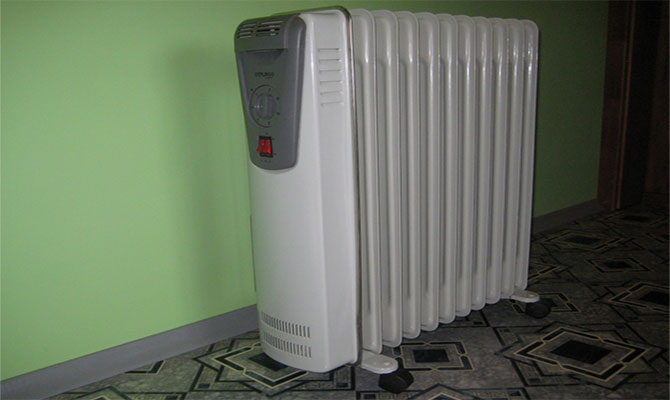
Inexpensive and efficient oil heaters are most common
The second option is a heater with a thermostat, in which the main heating of the oil takes place, which then circulates through the sections. In this case, the heating of the housing reaches only 60-65 ° C, which does not lead to burns. This design is more expensive, but it also allows you to automatically maintain the heating temperature.
The main advantages of oil heaters: low cost, easy operation, reliability, quietness, compactness, the ability to dry clothes or shoes on the body. The drawbacks include: the duration of heating the room (inertness of the apparatus), "burning" of oxygen, high temperature on the body with the risk of burns.
4 Features of convectors
Convectors warm up the directional air flow, formed by built-in fans. For this, electrical heaters are located inside the housing. When leaving the device, the heated air rises upward, providing constant mixing of the air in the room. As a rule, the convector is installed on the floor, which makes it possible to cover the entire volume of the room. Another option is the wall construction. Such an apparatus does not practically occupy a place in an apartment, and its design fits perfectly into a modern interior. An important advantage is the lack of heating of the case, which makes the device absolutely safe.
One of the types of convective apparatus is a fan heater. This is a fairly simple electric heater, which can very quickly provide heat in the right place of the apartment. The device has small dimensions and can be installed on the floor, wall or desk. Heat fans with a capacity of up to 2.5 kW are produced. The flow of heated air can be directed to the desired direction. The shortcomings of the device include: a small noise when working at high speeds and a possible smell when getting on a heated spiral of dust, especially with woven villi.
5
This type of electric heaters has appeared relatively recently and is increasingly popular. The main feature of such devices is that they do not heat the air in the room. Panels with a special substance emit rays in the infrared spectrum, which heat objects that occur in their path. The human body and his clothes are no exception, and therefore he feels warmth.
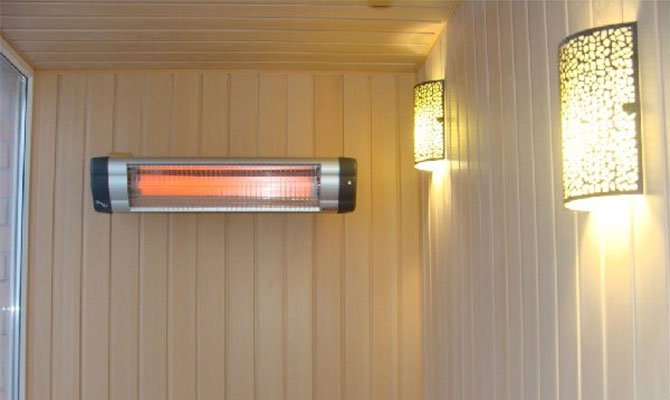
Despite the high cost, the infrared emitter is the most economical, since it consumes little energy
Infrared panels are available in the form of a film that can be installed anywhere: on walls, floors, ceilings, furniture. They are especially often used in bathrooms and shower cabins. It is important that they do not change the microclimate itself in the room, and therefore do not affect the oxygen content at all. Such devices have a high cost, but consume significantly less power than oil radiators or convectors, which compensates for the initial costs. This is why infrared heaters are considered to be the most economical devices.
6
Second life conditioned air split systems. In our time, the use of such devices is no longer considered something unexpected. Conditioners "winter-summer" more and more find their admirers, conquering the universality of use. Indeed, in the summer they cool the room perfectly, but they do not idle in the winter. In the cold period they are able to work as efficient heaters.
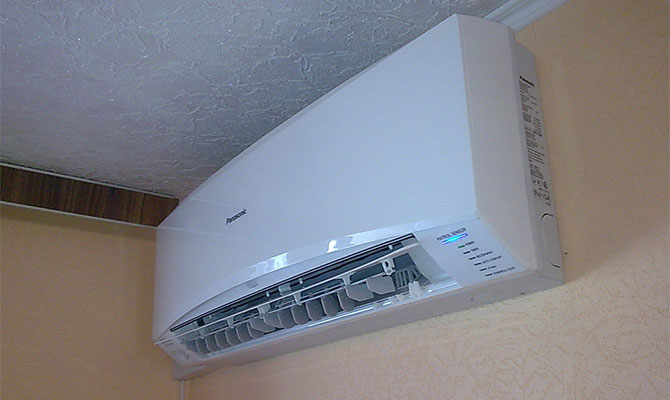
Split-systems cool the room in summer, and in winter they work as efficient heaters
The principle of operation of the system is based on the fact that when condensing freon in the heat exchanger of the indoor unit, it heats up to 70-80 ° C. By directing this heat into the room, the inverter operation of the air conditioner is provided, i.e. heating the air with a warm stream.
Of course, it's not advisable to purchase split-systems exclusively for heating the apartment because of the high price. However, taking into account the need for an air conditioner in the hot season makes the use of this option very attractive. The system does its job very well both in summer and in winter.
7 What to choose?
The analysis shows that all electric heaters are good in their own way. In an apartment in urban conditions, you can use any type of apparatus. The choice is largely determined by the frequency and duration of use. If central heating copes with heating more often, and the device is needed only in certain areas, then a thermal fan that will warm up the necessary part of the room will be more suitable. With periodic but fairly long heating, the oil cooler looks good, which can be quickly "rolled" into the right place and turned on for the right time.
Converters with their economy are more attractive when continuous operation, when the heating batteries only slightly raise the temperature. Finally, infra-red radiators deservedly received wide distribution in bathrooms and at arrangement of warm floors, especially in a children's room. In the presence of such sexes, central heating. Split systems are best installed immediately when planning air conditioning. In this case, the air conditioner will not be idle all year round.
The decision, which heater is best to install in the apartment, remains for the owner and his preferences. When choosing, various factors are taken into account, incl. required power, duration of operation, safety. The economic side often becomes the determining factor, but one should not pursue an absolutely cheap commodity - it can turn out to be a substandard fake.
Man's best friend in winter is a battery. However, often, for various reasons, central heating is not enough to keep the room at an optimum temperature. Then the heaters come to the rescue. Counters of shops in the "heating season" are saturated with a large number of similar devices. The buyer has a question - which device is better to choose? This we will try to find out.
Before buying a heater, decide in which mode it will most often have to work. For the house it is better to buy one type of fan, for
heating of the garage or big house - Another. By the way, the area that the device can heat up depends on the power. This is the second important criterionchoice. Remember that for every square meter of area you need about 100 watts of power of the device. This is the case with unheated rooms. If you buy a heater home, as an additional source of heat, then for a twelve-meter room, instead of 1200 W, a heater with a capacity of 800 to 1 thousand watts can suffice. If the room has two windows or one of the walls is external, the heat consumption is increased by another 0.2 kW per 1 m2.Heaters can be connected to single-phase (220V, 230V) and three-phase mains (380V, 400V).
To 220V, household heaters, convectors and radiators are usually connected. Powerful devices - to a three-phase voltage of 380 or 400 V.
A type
Heaters are divided into several types:
Oil radiators;
fan heaters;
heat guns;
convectors;
infrared heaters;
heat curtains;
electric fireplaces.
Oil radiator is a device in a sealed metal case with an electrical spiral inside, filled with mineral oil, which, when heated, gives heat to the body, and the latter, in turn, heats the air in the room. In the lower part of the body is a safety valve, which will work in the event of boiling oil. For safety reasons, oil coolers also have thermal fuses, thanks to which the radiator is simply switched off during overheating. Also such devices are equipped with the function of automatic switching-off of heater at overturning.
Modern oil radiators are equipped with a thermostat that measures the temperature of the oil inside the device, a smooth temperature regulator, an overheat protection system, a light indication, and a mode switch that consists of 2-3 positions for selecting one of several power levels. Such a control system not only helps to create an optimal air temperature in the room, but also saves electricity. To make it easy for the user to adjust the air temperature, manufacturers of some expensive models equip the devices with a thermostat.
The oil cooler consists of several sections - from 5 to 15 (depending on the model), which increase the heat exchange area. The more sections, the less the device warms up, which means it is more safe to use. The device of similar power, but with fewer sections, will heat up much more, providing the same performance that can be very dangerous for young children. The number of sections affects the cost of the heater.
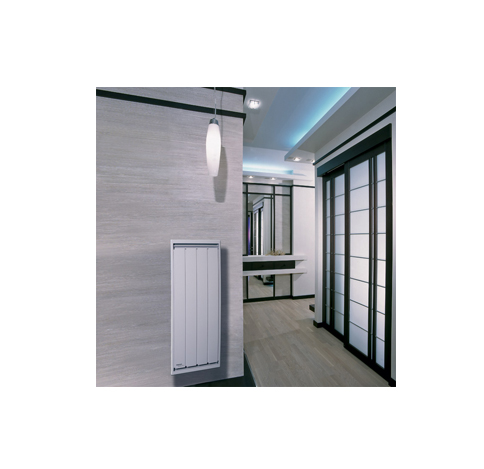
With the arrival of cold weather, the air in the room becomes dry, so many oil coolers are equipped with a small removable reservoir, where you can add water, which during work heats up and, evaporating, humidifies the air.
Oil radiators are often equipped with a special screen casing with holes in the bottom and top part, thanks to which the convection draft increases, due to which the heating rate doubles.
Also, the radiators are equipped with a built-in 24-hour timer, with which you can program the device. So, only having set the necessary values, you can enjoy a warm home by the time you come from work.
Oil heaters are considered environmentally friendly. Such devices are most suitable for the constant heating of an apartment, which is absolutely safe. However, up to the operating temperature, oil heaters warm up for a long time - from 20 to 30 minutes. In order to warm up the room faster and more evenly, some devices are equipped with fans. As for the weight, the oil coolers are rather bulky - from 10 to 30 kg, but they can be rolled, since their bodies are equipped with special wheels.
Inexpensive oil heaters have mechanical type Control with a temperature accuracy of up to 5 ° C. More "advanced" models, and, accordingly, more expensive, are equipped with an electronic control system with buttons and a display on which all information about the operation of the device is displayed. The accuracy of the installation of the electronic heater is up to 0.5 ° C. Heaters with electronic type of control usually provide remote control.
In the heaters, two types of heating elements are used: an electric spiral or a ceramic heater. The maximum heating temperature of the helix is 200 ° C. An open electrical spiral provides faster heating because it can be heated to 800 ° C. Ceramic heater consists of ceramic plates, the total area of which provides increased heat transfer at a lower heating temperature.
Fan heater consists of a heating element and a fan blowing air through the heating element, which makes the device very noisy. Thus, heat quickly and evenly, but with noise spreads around the room. Such devices are used in case you need to quickly heat the room.
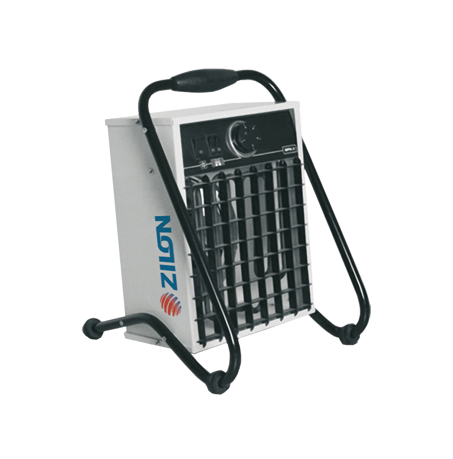
Heat guns is a kind of fan heaters. The device is a powerful thermal fan in a metal casing, working constantly, and not cyclically, as a fan heater. Therefore, they are often used for heating garages, car service centers, construction sites, etc.
Convector works the same way as a fan heater, only air passes into the heating element in a natural way, and not with the help of a fan. The convector is a smooth flat housing with a heating element inside. The principle of operation is based on convection. This means that heat is carried by the streams of air. Heavy cold air comes from below and, heated from the convector, rises upwards, where it exits through the grate with the blinds guides. The flow of heated air enters the room vertically, so its distribution occurs evenly.
Since the convectors do not need to heat the housing like oil coolers, the flow is heated instantaneously - in 40-70 seconds. Although convectors heat the air and not so fast as heat fans, they have a flat compact case, they can be broadcast to the wall, they are easy to operate, they do not make noise and look stylish.
Convectors are often used in creating heating system for cottages, country houses, villas, in general, where it is difficult to conduct a central heating system. This opportunity is their main advantage. Such a system is created simply. The user hangs in each room he wants to heat, along a convector, supplying them with a single control cable and, one of the devices, a "cassette-programmer". Some models of heaters, to avoid freezing a country house or cottages in winter, equipped with a special protection function, which consists in automatically maintaining the temperature in the room in the range of 5-8 ° C.
Wall convectors, though comfortable
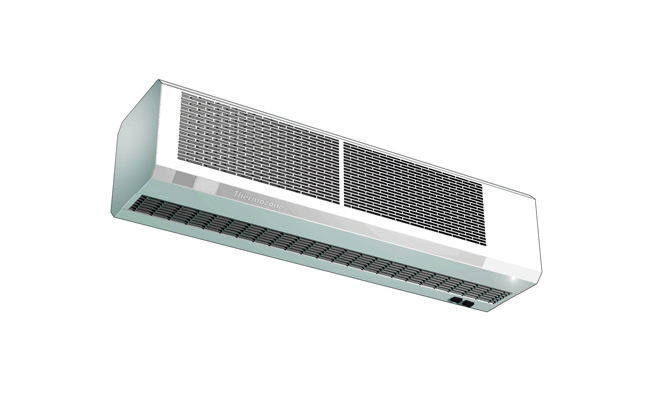 but they can not be installed by everyone - we need qualified help. As for energy saving, convectors are consumed 2-3 times less than oil coolers.
but they can not be installed by everyone - we need qualified help. As for energy saving, convectors are consumed 2-3 times less than oil coolers. Convectors can work not only on electricity, but also on gas (the most economical option) or hot water. The appearance of them at the same time will not differ, except that the materials of the buildings will be different. In inexpensive convectors, a thermocouple is usually made of steel, while more expensive models have heaters made of copper, aluminum, or combinations thereof. To increase heat output, manufacturers equip such devices with a noiseless fan.
Convectors are the perfect cooks
ant for rooms with large windows, as they block the way out from them cold air streams. If there is no window sill, and this happens when the wall is completely made up of glass, the convectors are built into the floor.Infrared Convectors work in the same way as conventional ones, but, in addition to the internal heating element, they also have an infrared radiator, from which heat rays emanate that transmit heat to objects and surfaces to which they are directed. Infrared convectors and
the function of zonal or point heating, the principle of which is to heat an object, rather than the entire room, is why such heaters are very economical.On the front panel of the infrared convector are thin quartz tubes or lamps, protected by a thin steel grating. Quartz glass, when heated, expands less than other materials, so it is durable, and also has good thermal conductivity. Infrared heaters are economical and noiseless, so many users consider them to be practically perfect heating devices.
Infrared heaters are:
Quartz;
carboxylic;
halogen;
mycothermic.
A quartz lamp contains a tungsten filament. Inside the tube there is a vacuum to prevent the oxidation of the metallic thread. The tungsten filament, under the influence of current, is heated up to 2000 ° C and becomes a source of infrared radiation.
The halogen bulb, in addition to the vacuum inside, is filled with an inert gas with various impurities, so that the evaporated particles of tungsten do not adhere to the inside of the glass, but return back to the filament. The temperature of such a filament in halogen devices rises higher than in quartz ones. This significantly reduces the heating time of the room.
Carbon heaters are equipped with lamps in the airless space of which is a thread of carbon fiber, which has a high thermal conductivity. Such heating elements have an unlimited service life, however they are fragile, they are easy to break. Nevertheless, such heaters consume little electricity, quickly heat the room and quickly cool off after switching off.
Micthermic heaters use a heating element, created using Micathermic technology. The principle of operation is simple: heat waves heat walls, floor and objects, which, in turn, give heat to the air. The heating element itself does not heat up, but only radiates heat to the surrounding objects, so it does not wear out. Micathermic heating element consists of several layers of light plates covered with 2 layers of mica. It is durable, stable in operation and safe.
Infrared heaters are often installed in bathrooms, so there are models with sealed enclosures. The use of such a heater prevents the appearance of fungus on the tile and the walls of the bathroom.
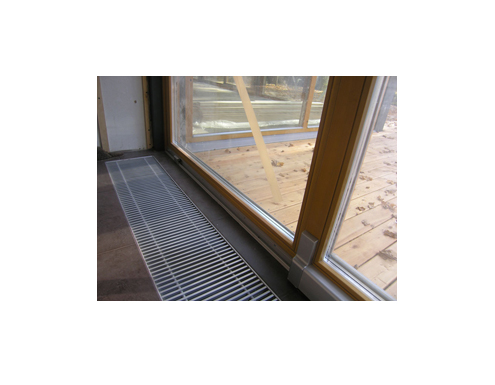
Heat curtains They are designed to prevent cold air from entering the room and a warm leak. Despite the fact that the heat curtains are designed to create the optimum temperature near doors, gates or windows, such a device can completely heat a small room.
Before choosing a heat curtain, you need to know the height and width of the window or doorway. They must correspond to the width
and the height of the veil itself. The higher the opening, the greater the performance of the heater. The maximum height of the thermal curtain installation is from 1.0 to 4 m, the minimum height is from 1.0 to 2.4 m. The height of the installation should not be greater than the length of the air flow created by the curtain during operation. For most models, it is possible to mount at a height of 2.5 - 3 meters, which is quite enough for living quarters, shops and offices. If you plan to use the veil in large doorways in warehouses, garages, etc., it is worth paying attention to powerful models with a large installation height.The classical version of the location of the veil is above the opening, that is, horizontal. If you are uncomfortable with this method of attachment, you can purchase a model for vertical installation on the side of the opening. There are also universal models that can be installed both vertically and horizontally.
Electric fireplaces are purchased primarily for beauty and comfort in the house, and already in the second place - for heating the room. Electric fireplaces consist of an electric firebox and a decorative body - a portal.
There are two types of electric fireplaces - built-in and detached. The first - imitate a real fireplace and mounted in a certain place. Stand-alone fireplaces do not require special installation, and if desired, it can be put in any place, because they have floor
but there are models that can be hung on the wall.Conclusion
What kind of heater to choose, it's up to you. First of all, decide on your needs and opportunities. If you plan to use a heater to permanently heat the room - you can use oil or convection. If you need to quickly heat the air in the room, it is better to buy a fan heater. If you need heating in the bathroom - pay attention to the infrared heaters, and wanted romance - the fireplace is at your service.
One of the main questions that worries the consumer before buying a heating device: "Which heater is more economical?" In other words, which device consumes less energy, and the heat output is high at the same time. Consequently, it saves our budget.
Especially acute is the question of economy when buying additional heating appliances for the house and villa. A the need to select an additional heater is:
- There are always failures in common system heating.
- No one is immune from leakage of pipes and batteries.
- Planned heat cut-off in the house.
- Replacement of old communications or repair of a house or cottage.
- The presence of small children in the room, which makes it necessary to maintain the heat in the apartment.
The most common and famous
The most common among economical radiators for homes and villas is an oil cooler. Undoubted advantages are:
- Easy to handle.
- Price.
- Inactivity (after the shutdown, it keeps the heat still for an hour and continues to heat the house or dacha).
- Low energy consumption - economy.
But there is a significant disadvantage - as a rule, it heats up to 150 degrees Celsius. And if not protective screens or gratings, you can simply burn yourself with such a heating device. And, in addition, over time, the oil evaporates and requires replacement or addition, wiring is also worn, which can cause fires in the cottage or home.
In second place in the prevalence is (in the people - dick). He also takes little energy and actively supplies the dacha premises, houses with warm air. But when you turn off the room can quickly cool down. Therefore, such a heater works for almost a day, with short breaks for 15 minutes.
New kinds of radiators
Today, on the market of offers, you can choose ultramodern, not so long ago developed models, which belong to the class of economical heaters.

- Ceramic panel - Also economical and refers to. One kW per hour is enough for such a panel to heat an hour in a room of 20 square meters. meters. Works for . Externally, the device is similar to a plasma TV. Works on the principle of heating all objects (floor, walls, furniture, etc.), which are located next to, and already from them the heat goes to the house. The ceramic panel belongs to the elite heater, it is usually installed under heated window sills, on the wall, closer to the ceiling. Can be portable and fastened on castors.
The most economical
By making a comparative analysis of all economical radiators, the experts agreed that the most economical is.  It works on the principle of an oil cooler, but is more modern and safe. Heat exchange is carried out by the principle of air circulation through the inside of the convector. In addition, the convector is the safest. It can be left unattended for a long time, which is not recommended with the same oil heater.
It works on the principle of an oil cooler, but is more modern and safe. Heat exchange is carried out by the principle of air circulation through the inside of the convector. In addition, the convector is the safest. It can be left unattended for a long time, which is not recommended with the same oil heater.
To choose the convector is the most economical - means to purchase reliable, long-acting equipment for your dacha. The convector does not heat above 60 degrees, the air does not overdry. It gives off heat after switching off for more than 20 minutes. And if any other radiator requires a cost of approximately 2 kW to heat the room 18 square meters. meters. The convector consumes 25% less. He really is the most economical electric appliance.
General criteria
But before choosing a heater for a dacha, an apartment or a house, we look not only at economy and price, but also we pay attention to other criteria:
- Ecological compatibility.
- Compactness.
- Ease of use.
- Efficiency.
- Guarantee period.
- Security.
- Price.
The last point is worth mentioning separately. A year in our country there are more than 40 thousand fires, the main cause of which is the malfunction of electrical equipment. Therefore, it is clearly necessary to remember a number of rules:
- Do not dry things on the radiators.
- Lattices should be open.
- Do not leave unattended.
- Every 5 hours, turn off for 15 minutes.
And now it's up to you to choose the most economical, inexpensive and convenient for your dacha, home, apartment heater.


